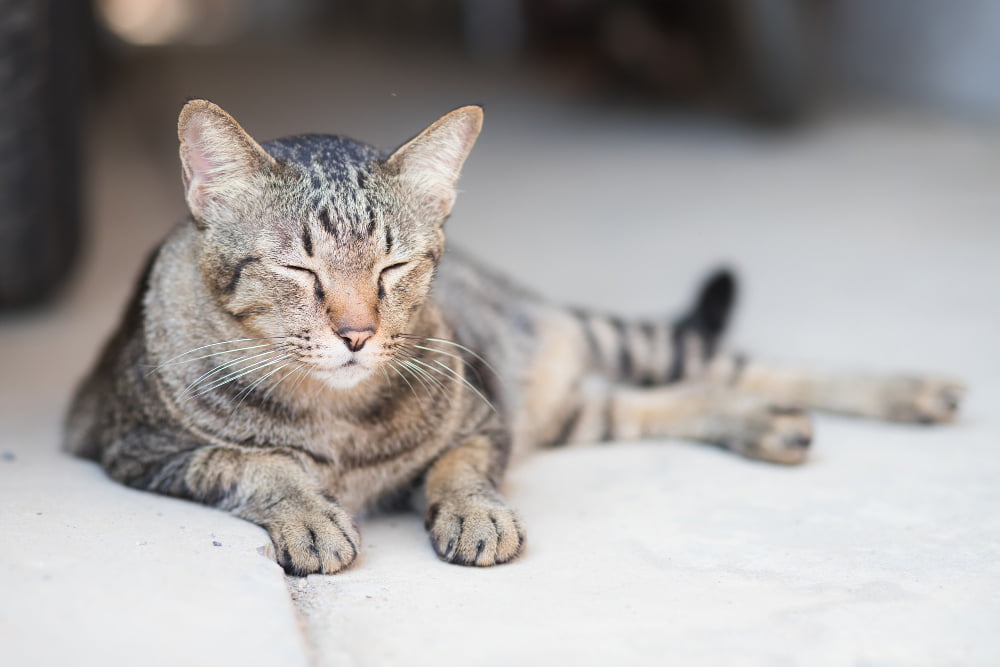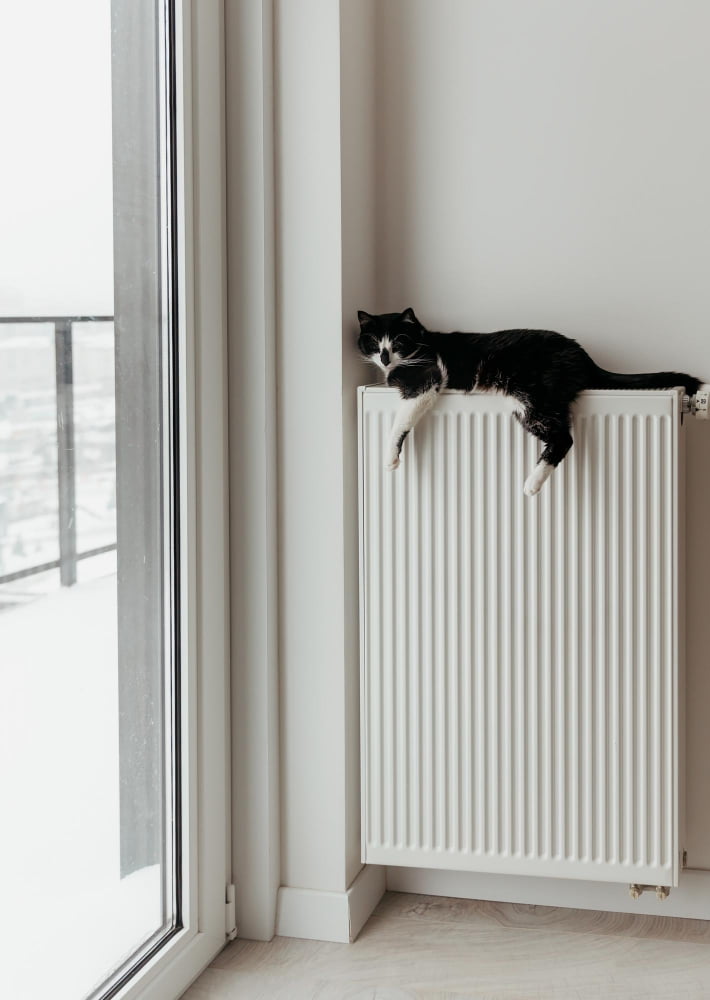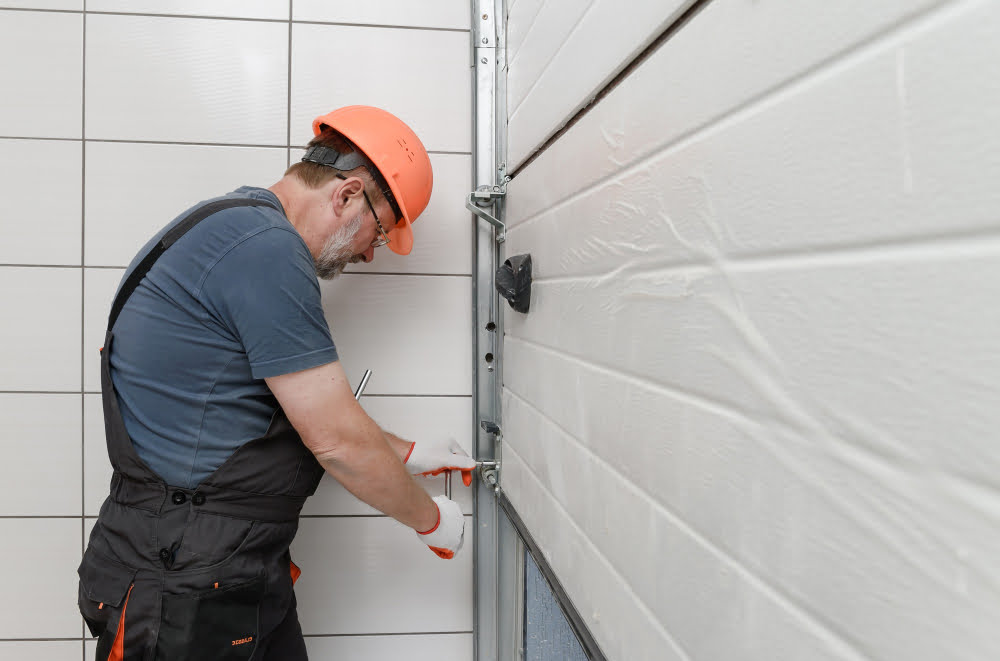Cats should not be left in a garage if the temperature drops below 45 degrees Fahrenheit, as it can be unsafe and potentially life-threatening.
Cats are often comfortable in a variety of environments, but when it comes to temperature, there are certain limits. Generally, temperatures below 45°F are considered too cold for cats, especially if they’re staying in a garage. This is because garages, unlike homes, are not typically insulated or heated to maintain a constant temperature.
However, there are several ways to make a garage more comfortable and safe for a cat in colder months. This article will guide you through the specifics of maintaining the right temperature, insulating your garage, and other essential tips to ensure your feline friend stays warm and cozy.
Key takeaways:
- Cats should not be left in a garage below 45°F.
- Signs of hypothermia in cats include shivering, lethargy, and lack of coordination.
- Extended exposure to cold can lead to health issues like frostbite and pneumonia.
- Best practices for keeping cats warm in a garage include heated beds and blankets.
- Insulating the garage and providing a warm, clutter-free space is important.
Understanding Cat Body Temperature Regulation

Cats are known for their adaptability, but their bodies are designed to function within a limited temperature range. Normal body temperature for a healthy adult cat is between 100.5°F and 102.5°F. A drop below this range can disrupt metabolic processes, leading to discomfort or even hypothermia. On the other hand, if the body temperature falls above this range, it poses a risk of overheating or heat stroke.
Felines can regulate their body temperature thanks to their thick fur. However, prolonged exposure to extreme cold can overwhelm this system. If the garage is poorly insulated, the combination of cold concrete floors, breezy windows, and an uninsulated roof can rapidly reduce your cat’s body warmth.
Some heat is also produced from the digestion of food. Therefore, well-fed cats can generally withstand cooler environment compared to their underfed counterparts. Yet, remember that the balance between food, heat creation, and cold tolerance is delicate and varies from one feline to another.
Bear in mind that every cat is unique; factors such as age, health status, and breed significantly influence a cat’s ability to tolerate cold. Kittens, elderly felines, and those with health issues are particularly susceptible to cold-induced complications.
Finally, understanding how cold affects your cat and its body’s regulation mechanisms is the first step. Getting to know the signs of discomfort in your pet will enable you to make the garage a safe and suitable environment regardless of the weather.
Signs Your Cat May Be Too Cold

Cats are adept at regulating their body temperature, but persistent exposure to cold can lead to symptoms of hypothermia. Look for signs such as shivering, lethargy, and lack of coordination.
Also, watch for changes in eating habits, as cats expend more energy when cold and may eat more than usual or conversely, lose appetite due to discomfort.
Check their ears, paws, and tail regularly; these areas are more prone to frostbite and appear pale, cold, or hard when affected.
Finally, observe your cat’s behavior. Cats instinctively try to find warm areas when cold, so if they’re curling up in an unusually tight ball, or seeking out hidden or enclosed spaces, it may signal that they’re trying to warm up.
Understanding these signs is crucial in helping you take necessary steps to protect your pet’s health.
Potential Health Risks for Cats in Cold Garages

Extended exposure to low temperatures can lead to several health issues in cats. Hypothermia, a dangerous drop in body temperature, is a grave risk, symptoms of which include shivering, lethargy, and frostbite. Frostbite typically affects the ears, tail, and paws, turning them black and leading to gangrene if not treated timely.
Pneumonia is another potential risk. Cats, particularly older or immunocompromised ones, can easily succumb to respiratory infections when kept in cold, poorly ventilated buildings.
Regular exposure to cold can also worsen pre-existing conditions like arthritis. It’s not uncommon for cats to display signs of rigidity or reluctance to move from a warm spot when temperatures drop.
Finally, lower temperatures can impact a cat’s appetite and metabolic processes. Lack of sufficient heat may cause a decrease in thirst and disrupt normal feeding patterns, potentially leading to dehydration or nutritional deficiencies. This can then weaken their immune system and make them more susceptible to disease.
Therefore, it’s absolutely vital to keep a close eye on your feline friends during the colder months, and ensure the garage has adequate warmth for their safety.
Best Practices for Keeping Cats Warm in a Garage

Efficient heating in the space where your feline companion spends time is vital. Portable heaters designed for garages provide a great solution, but keep the unit at a safe distance to prevent burns. Likewise, Clearing a spot for your cat near a window can allow natural sunlight to provide warmth during daytime.
Blankets or cat beds are a must. They provide an insulating layer from the cold concrete floor. Heated cat beds are a luxurious option if there is safe access to electrical outlets. Straw bales can also serve as windbreakers and insulation, in absence of electricity.
Make sure your cat remains hydrated. Cold weather invariably leads to dry air. Regularly providing fresh water aids in maintaining your furry friend’s internal body temperature. A cat’s diet may also need to be adjusted to provide extra calories that can be burned for warmth.
Lastly, maintaining a clutter-free environment reduces hazards and creates an easier path for your pet to access warmer areas quicker. No matter the circumstance, do prioritize the safety of your cat above all else when taking measures to offset cold temperatures in your garage.
Preventive Measures to Ensure Ideal Temperature for Cats in Garage

It’s essential to address the termperature issue proactively. Heat sources such as pet-friendly space heaters or heated beds can be beneficial. Pet parents should caution against placing a heater near anything flammable and keep the heat at a low setting to prevent overheating. Insulated cat houses are another fine option, providing warmth and security.
Insulating the garage door can limit cold air incursion—weatherstripping around the door’s edges and thermal curtains are beneficial. Maintaining gaps in the garage door can prevent complete sealing, allowing fresh air flow.
Another useful method is to block drafts in the garage. Draft stoppers or draft-proofing strips can limit cold drafts from seeping in, securing the interior temperature.
Stray cats seeking refuge may need extra care. Leaving out warm blankets or bedding can provide necessary warmth; remember to change these frequently to ensure cleanliness.
Always ensure that the environment remains safe and free from potentially hazardous materials or vehicle-related dangers, regardless of the temperature. Cats are very inquisitive creatures and might find themselves in risky situations if left unchecked.
Materials and Structures to Insulate the Garage for Cats

When considering materials for insulation, there are several options available.
One of the most reliable materials is, undoubtedly, spray foam insulation. It not only creates a thick, solid barrier against cold air but also covers any small nooks where drafts might sneak in.
Rigid foam boards, fiberglass, or cellulose can also be used. These materials are less expensive and easier to install, but they might not provide the same level of insulation as spray foam.
Adding an insulated cat door can create a passageway for cats to access the garage without allowing cold air in. This can also be fitted with a microchip sensor so only your cat can access it.
Thermal blankets or heating pads designed for pet use are also great options. They can help provide a warm area for cats to curl up. Take care to choose products which have safety features such as automatic shut-off to prevent overheating.
For the structure, try to section off a smaller space within the garage specifically for your cat. This could be a raised platform or a converted cupboard. A smaller space is easier to heat and will maintain warmth longer.
Lastly, some people opt for a heated cat house. These are fully insulated and regulated to stay at a specific temperature. Ideal for garages, outdoor spaces, or unheated areas, these houses can be the perfect warm refuge for your feline friend.
When to Consult a Veterinarian Regarding Cat’s Cold Exposure

Recognizing signs of hypothermia is crucial. If your cat exhibits severe shivering, lethargy, shallow breathing, or a weak pulse, immediate professional help may be necessary.
Always monitor their behavior after exposure to cold temperatures. An unsteady gait or seeming disoriented could indicate frostbite, another serious ailment requiring veterinary attention.
If there’s a prolonged decrease in appetite, it could be a sign of a cold-induced condition. Responsible pet ownership involves scheduling veterinarian visits at the first sign of unusual behavior, especially during the cold months when the garage is being used as a shelter.
Remember, prompt medical attention can mean the difference between manageable discomfort and life-threatening conditions. So, vigilance is key in ensuring the welfare of your cat.
FAQ
Is it OK to leave my cat in the garage?
No, it is not advisable to leave your cat in the garage due to potential cold temperatures and the inability for animals to adequately warm such a large space with their body heat.
Will my cat freeze in the garage?
Yes, your cat will be cold in the garage during freezing conditions, despite their fur and body temperature of about 101 degrees, they still need warmth such as a dry and clean blanket or a box to retain their body heat.
How long can a cat survive in a garage?
A cat can survive in a garage without food for two to three weeks, but without a water source, its survival will be limited to merely a few days.
What temp is too cold for indoor cats?
Indoor cats should ideally be kept in temperatures around 70 degrees, although they can endure environments between 50-60 degrees.
What measures can be taken to ensure my garage is warm enough for my cat?
Insulate the walls and ceiling, install a small, safe heater, and ensure there are no drafts or leaks to maintain a warm environment in the garage for your cat.
How can one create a safe and comfortable space for a cat in a cold garage?
To create a safe and comfortable space for a cat in a cold garage, provide soft bedding, fresh water, food and a low-energy heater to maintain warmth while ensuring all potentially harmful substances and tools are securely stored away.
Are there any signs to look for that indicate my cat is too cold in the garage?
If your cat is exhibiting behaviors like shivering, lethargy, and curling up in tight balls or seeking warmth constantly, it could be a sign they are too cold in the garage.